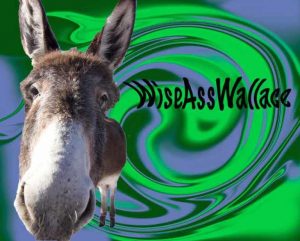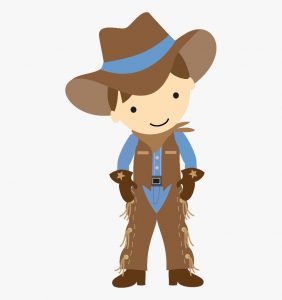
WiseAssWallace
WiseAssWallace is a beloved guest columnist for Cayuse Communications. From his pasture in southwestern Colorado, he’s on a quest to improve horse-human connections and make lives better for his fellow equines. In this installment, WiseAssWallace discusses helmet ideology and practice.
Read more WiseAssWallace columns here.
Read this important article on Safety.
WiseAssWallace begins:
Dearest Humans, if there is one thing I envy of you, it’s words. All day long, I talk with tail swishes, glances, feet placement, and ear position. Just once would I love to verbalize and share my inimitable wisdom.
I was contemplating your wondrous mode of communication while letting the splendid words, panacea and panache flow through my mind. Why were panacea and panache flowing through my mind?

Let me tell you:
I watched this week as two riders took my pasture mates out of the paddock and proceeded to saddle up and ride. Or, shall I say, attempt to ride?
In the first scenario, the human seemed agitated. I say this because it took her a few minutes to get a halter on my gelding friend, who is usually quite amicable. She then struggled with the saddle as well as the bridle. It seemed like she was rushing, though I didn’t sense a storm or a predator in the area, so I’m not sure why she was agitated.
My friend thought there must be a storm or a predator nearby, too, because of how this human was behaving. He started shifting around and getting worried.
I watched as they started riding. She reached for the gate, nearly lost her balance, and then accidentally spurred him. The weight shift and the dig to his flanks further worried my friend and he scooted forward, trying to make sense of it all and trying to get away from whatever the problem might be.
To his great relief, she came off.
Other humans came running and there was a big commotion. I thought maybe there was mountain lion in the barn or something. They gathered around the human and I heard one say, “Thank goodness you were wearing a helmet!”
I learned what a helmet was by seeing them point to it. The rider even took it off and kissed it. It seemed that this plastic cap-with-strap was a veritable panacea for the humans. While we equines thought the whole incident was pretty messed up and scary, the humans seemed pleased at the outcome, thanks to this almighty cap-with-strap.
 The second scenario was just as quizzical to me and my buddies:
The second scenario was just as quizzical to me and my buddies:
This cowboy, all dressed up with chaps, buckaroo boots, wild rag, and cowboy hat, came into the paddock to halter my equine associate.
I watched as he proceeded to saddle her. There was something not quite right. Maybe he smelled fresh grass or was flustered by flies. I watched as he glanced in a window’s reflection to check his outfit, and then walked past some girls playing with their ponies.
What he didn’t notice was the balloons they were inflating. Nor did he notice the increasing irritability of my friend, his equine partner, as she heard these weird blowing sounds from the girls. I think she was fretful about leaving us, too, because she was tossing her head and winnying in our general direction.
The guy, full of panache and proud as a peacock, still didn’t notice her anxiety and I’m thinking, ‘oh, Lordy, here we go again.’
He mounted up just as the girls let go of their fully-inflated balloons. The ponies took off in all directions. The mare jumped sideways and spun, trying to get away from the commotion. The dude found himself in the dirt, watching from ground level as the girls giggled and ran after their ponies.
He rubbed his head and wobbled as he collected himself and his hat. The fashionable cowboy looked better on the horse, but he just walked with her, and not in a straight line either. When he passed the reflection, he didn’t look.
In closing, if I could speak to you, dearest humans, I would tell you that us equines don’t know if you are wearing a helmet or not. We don’t care if you are wearing a helmet or not.
We do care if you are unbalanced, nervous, out of shape, and/or slow to react. We do care if you are distracted, preoccupied, or otherwise not aware of what’s going on with us and with the moment.
These are some elements of riding and partnership that we think you should be focused on. Check yourself. Or, as one of my favorites, Will Shakespeare would say, “The fool doth think he is wise, but the wise man knows himself to be a fool.”
Read this important article on Safety.

Cartoon by Edward Steen
Tactfully addressed!!
I can’t believe I was reading this post on Best Horse Practices. While the rider competence / skill elements are very relevant, the dismissive attitude toward helmets embedded in the discussion, even for the purpose of sarcasm, was not only careless but is a disservice.
I’ve been in fire-rescue and outback large animal rescue for over 45 years. There isn’t room in this comment to describe the fatal head injuries and traumatic brain injuries that resulted from riders who were dismissive of the value of helmets, and conversely riders who walked away with broken helmets and not much more than scrapes and bruises. The turning point was when we experienced five fatal equestrian accidents in our county in one year, punctuated by my neighbor across the street clipping her temple against a utility pole when her horse scattered, and who was subsequently hauled away by the medical examiner. Later, less than a block away, a rider and his mount were struck by a speeding car. The mount had to be euthanized but the rider was not seriously hurt. Safety gear has been developed for a reason.
Even riders on very seasoned horses can fall victim to the unexpected. Two years ago a rider was pitched from a veteran Search and Rescue horse out in the bush when the horse struck an abandoned can that happened to be inhabited by a hive of wasps. This is a horse that you could literally stand up on his back in a parade. I could go on with these stories and bore readers to death.
The point is, especially for those of us who ride rough country but is appropriate for everyone who is mounted, head protection is (or should be) a “no-brainer.” Credible publications should not, even inadvertently, encourage wannabe cowboys and cowgirls to place vanity over safety. I don’t want any of your readers to be the next body I find out on the range.
Willis, me thinks you may have overlooked that BOTH riders, helmet strappers and not, fell victim to injury. How is my recounting of the concussed cowboy encouraging anyone to not were a brain bucket? The whole point of my foray into human practice particulars, is to note dogmatic nature around helmets (on either side!) while folks wildly overlook the necessary precautions that are so awfully evident to us equines.
haha, LOL, we do need to save ourselves from ourselves, for sure. I love your observations! My thoughts…. it is apparent that we humans can be , um, so stupid/ignorant/’human’ and that a helmet can in fact be quite helpful. I do wear one, but not always…am I stupid? I might be. I’m certainly not safe because I choose to wear a helmet, but if for some reason I goof, the horse trips, etc. it may help my head if we go down, or I come off. So, I don’t want to call out anyone for deciding either way. Good horsemanship practices can prevent most things, but certainly not everything. Thanks for the writeup!
It’s interesting the helmet issue bothers this publication so much.
Kerry, not sure I understand what you mean by this publication being bothered by the helmet issue. Maybe you could elucidate? This article is about BOTH sides of the conversation. And, by the way, it’s a conversation that crops up ALL THE TIME in horse circles.
Wise Ass Wallace points out that the so-called ‘helmet nazis’ can ignore other important tenants of safety. On the flip side, he also sees that vain, must-wear-cowboy-hat yahoos can sometimes get it wrong, too.
Well put. That in my opinion is a great endorsement of self- protection. Humor and all. I, in no way, perceived it as an endorsement to shun helmets. Interesting perspectives in the replies.
Traumatic brain injury is forever. As a health care worker, I wish everyone who scoffs at helmets could meet those with traumatic brain injury from accidents. Please use helmets with MIPS and of course, practice good horsemanship above all else. A helmet isn’t guaranteed to save you, but it certainly increases your chances. I do not get on my horse without a helmet, but even more importantly, without checking out how she and I both feel that day.
Live long, be well, and ride on!
The comments here make me wonder whether people read the article or are just having a knee jerk reaction to what they think they read. Wallace is saying helmets are not a replacement for fitness and basic safety measures with horses. Do your groundwork, stay fit, take riding lessons, learn to read the situation, and put on your helmet. Just putting the helmet on without the rest of those things won’t keep you safe. Thanks for calling this out, Wallace.
Thank you WiseAssWallace, you have made me laugh and given me a conversation starter that is both tactful and funny
while crossing a stream we had crossed at least a dozen times prior to this day, my horse slipped and fell to the left. I came off also to the left and my head struck a large rock in the stream. Fortunately i was wearing a helmet. Enough said.